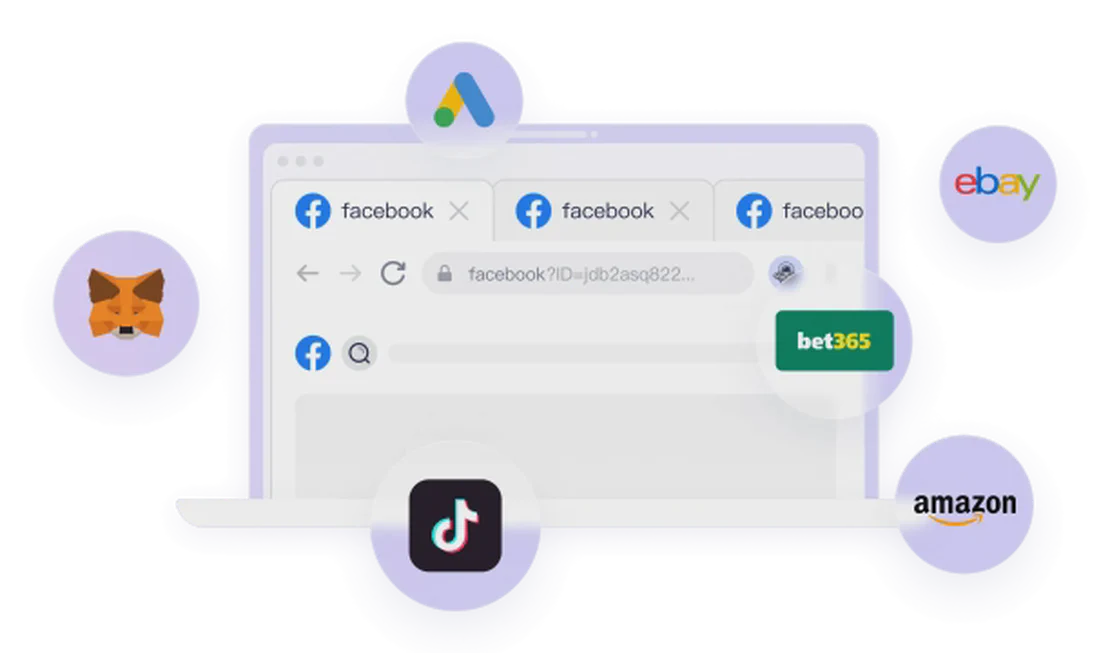1. What is WebView Fingerprinting
WebView is a component that allows applications to display web content within a native app. When a WebView initiates a connection, it sends a ClientView message during the handshake process. This message reveals a WebView’s:
- User-Agent Strings (e.g., Mozilla/5.0 (Linux; Android 10; Pixel 3 XL) AppleWebKit/537.36 (KHTML, like Gecko) Chrome/83.0.4103.106 Mobile Safari/537.36)
- Supported Protocol Versions (e.g., HTTP/1.1, HTTP/2)
- WebView Features (e.g., JavaScript support, DOM storage)
- Application Layer Protocol Negotiation (ALPN) (e.g.,
h2,http/1.1) - Custom Headers (e.g., Accept-Language, Referer)
Tools like WebView fingerprinting APIs and network stacks can use the combination of these values to uniquely fingerprint a WebView instance.
These fingerprints are largely beyond JavaScript and are generated at the network stack level, making detection robust against traditional browser faker libraries.
2. How Platforms Use WebView Fingerprints for Tracking
WebView fingerprinting is extensively used by advanced fingerprinting platforms, SaaS systems, and adtech companies to detect:
- Non-standard WebView Clients: Applications that use custom WebViews often carry a fingerprint that deviates from standard browser fingerprints.
- Bot Networks & Automation Tools: Automated systems tend to use uniform WebView sequences, while normal app installations show organic variation.
- Session Consistency Checks: Systems can log and compare WebView fingerprints across login attempts to detect account reuse or takeover attempts.
- User-Agent WebView Matching: Platforms verify that WebView handshake behavior matches the application
User-Agent, raising red flags with mismatches. - Geo-WebView Correlation Checking: Detection tools combine WebView profile analysis with IP geolocation to identify clients spoofing location without realistically mimicking that region’s app behaviors.
WebView fingerprints are not directly manipulatable via app scripts, requiring deep-managed network stacks or custom WebView client emulators to spoof reliably.
3. How FlashID Overrides WebView Fingerprints
Most traditional app automation tools cannot spoof network-level WebView data — but FlashID uses a network proxy architecture that imitates new WebView communication stacks to simulate real and rotating WebView profiles.
The features FlashID offers for WebView fingerprint protection include:
- WebView Profile Switching by Instance: Each FlashID WebView profile can apply a specific fingerprint matching its region and app identity.
- Emulated ClientView Patterns: You can use FlashID to generate a new
ClientViewsequence consistent with real WebView implementations like Android WebView or iOS WKWebView. - User-Agent Control: Fine-tune which User-Agent strings your WebView uses per context to simulate various app environments.
- Protocol Version Customization: FlashID profiles can toggle support for HTTP/1.1 through HTTP/2 based on expected app identity.
- SNI and ALPN High-Fidelity Spoofing: FlashID simulates the correct host header and application protocol negotiation behavior to blend into real app traffic.
- WebView Randomization Forecasting & Rotation: FlashID intelligently rotates or maintains WebView fingerprints for long-term session consistency where needed.
- Integrated Spoof Signature: With configurable headers and custom features, FlashID reduces session entropy and blocks session linkability through WebView behavior mismatches.
FlashID’s network isolation design and proxy fingerprinting ensure WebView layer manipulations are untraceable, making your profiles indistinguishable from organic and natively-installed applications.
You May Also Like
